“Use it now, understand it later”—this seems to be the most common approach to using AI in business, particularly generative AI because of all the productivity benefits it promises. And new research from organizational design and planning software platform Orgvue not only affirms this reckless strategy, but also shows that businesses are continuing to ramp up investment in AI despite being unclear on its business impact, much less how to implement it.
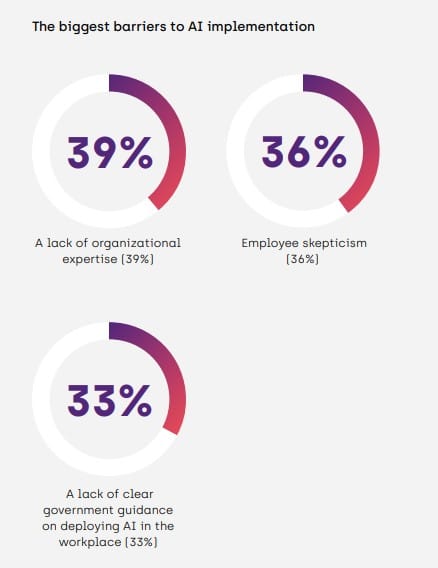 The research highlights contradictions in business concerning technology investment and AI’s impact on the workforce
The research highlights contradictions in business concerning technology investment and AI’s impact on the workforce
On the one hand, 61 percent of 1,000 C-suite and senior decision makers surveyed said they expect AI to replace people in their organization, with 69 percent saying they think AI will be the main driver of workforce transformation over the next three years—but on the other hand, 48 percent are unsure how they will manage developments in AI to optimize use of the technology.
The firm’s new Human-First, Machine Enhanced: The Role of AI in Workforce Transformation report finds that 82 percent of organizations have already invested in AI, with another 33 percent saying they will increase this by more than 50 percent in the coming year.
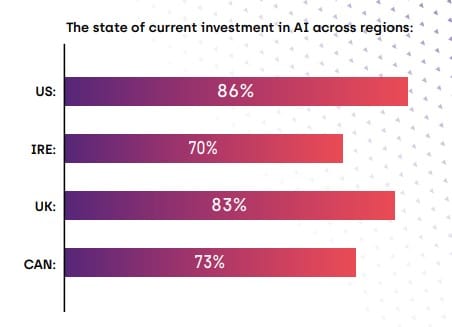 “Organizations are beginning to realize that the practicalities of embedding AI into core business operations is far from simple. There’s a dichotomy between the need for business leaders to prepare for AI entering the workforce, their desire for change, and the organization’s ability to make this transformation a reality,” said Oliver Shaw, CEO of Orgvue, in a news release. “This gap in thinking stems from a lack of clarity on exactly how AI will impact the business and the workforce. Indeed, our research indicates spending so far has been more of a gold rush than a carefully plotted journey. This will make managing the transformation all the harder.”
“Organizations are beginning to realize that the practicalities of embedding AI into core business operations is far from simple. There’s a dichotomy between the need for business leaders to prepare for AI entering the workforce, their desire for change, and the organization’s ability to make this transformation a reality,” said Oliver Shaw, CEO of Orgvue, in a news release. “This gap in thinking stems from a lack of clarity on exactly how AI will impact the business and the workforce. Indeed, our research indicates spending so far has been more of a gold rush than a carefully plotted journey. This will make managing the transformation all the harder.”
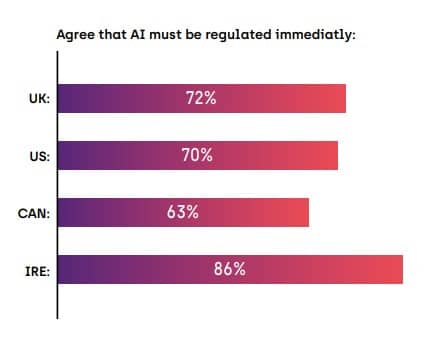 Business leaders are excited about AI’s potential for growth and productivity (79 percent), but 70 percent said they have a responsibility to protect their workforce from redundancies before adopting AI, and 78 percent think human intervention is critical to preventing negative outcomes from AI. For this reason, 80 percent plan to reskill employees to use AI in the workplace.
Business leaders are excited about AI’s potential for growth and productivity (79 percent), but 70 percent said they have a responsibility to protect their workforce from redundancies before adopting AI, and 78 percent think human intervention is critical to preventing negative outcomes from AI. For this reason, 80 percent plan to reskill employees to use AI in the workplace.
Similarly, 78 percent want governments to introduce stricter rules and regulations, while 54 percent believe regulation has not kept pace with investment in AI and 70 percent say AI should be regulated immediately.
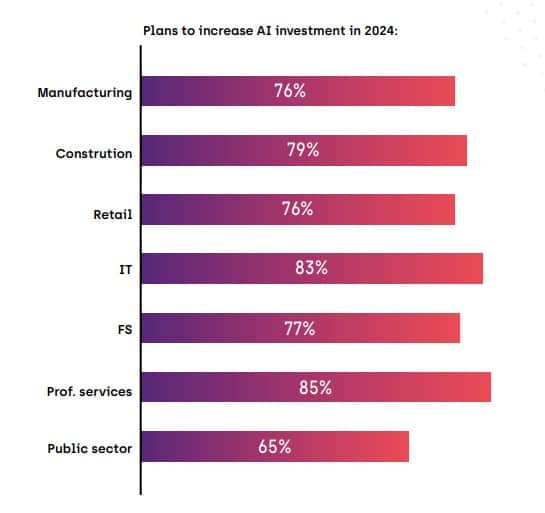 “Whether it’s optimism or naivety, CEOs are confident AI will solve their business challenges. But the data shows that divisional leaders are less convinced by the impact of AI, with a pronounced skepticism at this level of the value AI can bring to the business and how quickly it can be embedded into everyday operations,” said Shaw.
“Whether it’s optimism or naivety, CEOs are confident AI will solve their business challenges. But the data shows that divisional leaders are less convinced by the impact of AI, with a pronounced skepticism at this level of the value AI can bring to the business and how quickly it can be embedded into everyday operations,” said Shaw.
“This is a dangerous position for organizations to find themselves in. A disconnect in perspective—between those at the top and those responsible for delivery—will ultimately derail any long-term plans for business change,” he added. “To achieve their AI ambitions, CEOs should arm themselves with a better understanding of how AI will truly impact the work their people do today and the skills their organization has, as well as how this may change over time.”
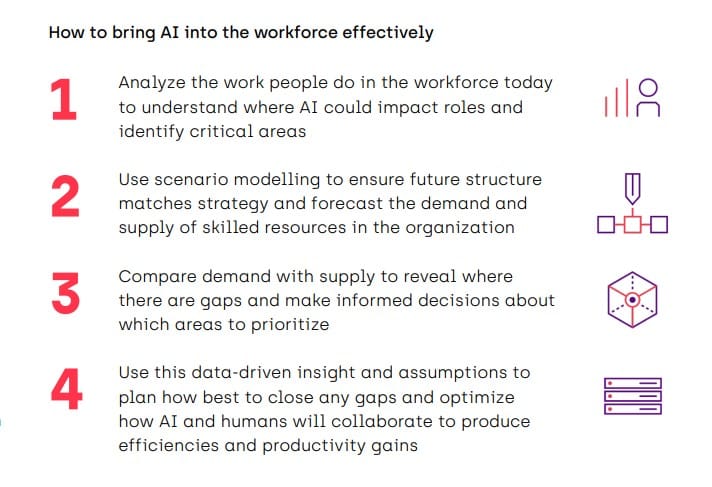
The report is based on an international survey of 1,000 C-suite and senior decision makers at medium and large organizations.








